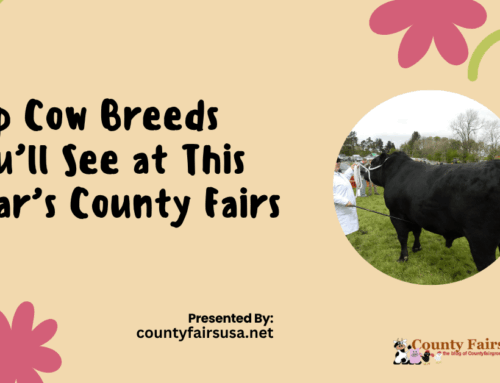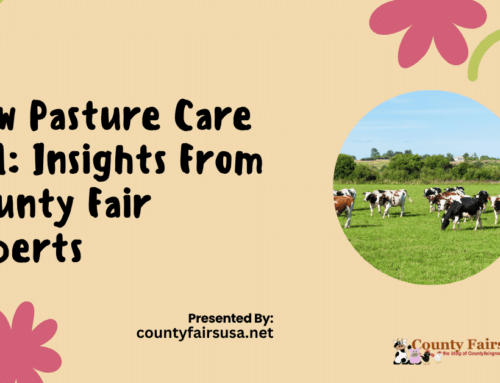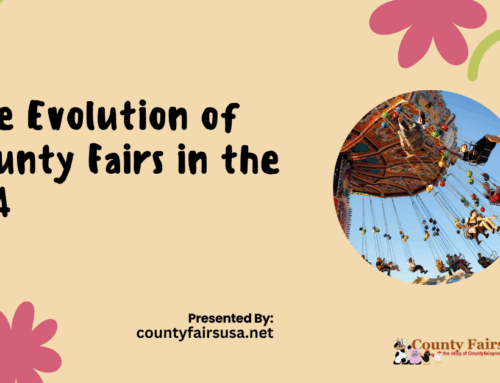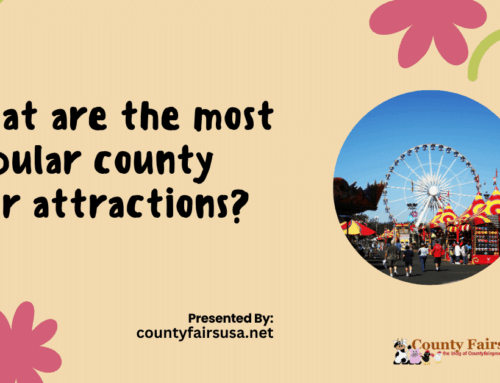County fairs have long been a cherished tradition, bringing communities together for a mix of agriculture, entertainment, and local culture. Originally rooted in farming exhibitions and livestock showcases, these fairs have grown into massive events featuring amusement rides, live performances, and an ever-expanding variety of food options.
How County Fairs Have Changed – Then vs. Now
While the heart of county fairs remains the same, celebrating local talent, industry, and culture, the way they operate has shifted dramatically. Over the years, new technologies, evolving interests, and economic changes have reshaped the fair experience.
From simple agricultural showcases to dazzling entertainment hubs, county fairs have undergone a fascinating transformation. This article explores the changes that have taken place over the decades, highlighting key moments in their evolution.
1. The Early Days: Agriculture and Community Gatherings
The Roots of County Fairs
The origins of county fairs date back to the early 19th century when they primarily served as agricultural expos. Farmers would gather to display their best livestock, crops, and homemade goods while exchanging farming techniques and business insights. These fairs provided a platform for rural communities to connect and celebrate their hard work.
What Defined Early County Fairs?
- Livestock Shows: Farmers competed in cattle, horse, pig, and poultry exhibitions.
- Produce Competitions: The best vegetables, fruits, and grains were awarded ribbons.
- Homemade Goods: Local artisans showcased handmade furniture, quilts, and preserves.
- Community Bonding: The fairs created a social hub where people exchanged news and stories.
In the early years, county fairs were deeply tied to the agricultural calendar, taking place during harvest seasons when farmers had time to gather and celebrate their yields.
2. The Introduction of Carnival Rides and Midway Attractions
When Fun Became a Bigger Focus
As cities and rural areas expanded, county fairs began incorporating more recreational elements. By the early 20th century, they featured carnival rides and game booths, making them more appealing to a wider audience.
Key Changes During This Period
- The Ferris wheel and merry-go-round became staple attractions.
- Midway game booths introduced activities like ring toss and balloon darts.
- Traveling entertainment acts such as magicians, circus performers, and Vaudeville acts became common.
- Prizes, from stuffed animals to novelty trinkets, encouraged more participation in fair games.
This period marked the shift from county fairs being solely about agriculture to offering a mix of education and entertainment.
3. The Influence of Technology and Commercialization
Advancements in Fairground Attractions
By the mid-20th century, county fairs began embracing mechanical rides, electric lighting, and sound systems that enhanced the visitor experience. Roller coasters, bumper cars, and spinning rides became major draws for families and thrill-seekers alike.
The Commercial Aspect of County Fairs
- Corporate Sponsorships: Companies began sponsoring events, introducing national brands into what were once community-driven fairs.
- Food Vendors: Traditional homemade fair food started giving way to large-scale vendors selling popular treats like deep-fried Oreos and turkey legs.
- Ticketed Attractions: Many fairs began charging for specific events, including concerts and thrill rides, to generate revenue.
While fairs retained their agricultural roots, they were evolving into larger-scale entertainment destinations.
4. Evolving Entertainment: From Local Talent to Big-Name Acts
Shifting Performance Styles
In earlier years, local musicians, folk dancers, and storytelling performances were the primary sources of entertainment. However, as fairgrounds expanded and budgets grew, event organizers started booking nationally recognized performers.
What Changed in Fair Entertainment?
- Live music concerts featuring country, pop, and rock stars became headline attractions.
- Talent competitions replaced casual folk performances, attracting competitive participants.
- Stunt shows and demolition derbies became popular, drawing large crowds.
- Fireworks displays became an expected part of closing ceremonies.
The evolution of entertainment made fairs more appealing to people of all ages and backgrounds, increasing attendance rates significantly.
5. The Digital Age: Social Media and Virtual Experiences
The Role of Online Platforms
The introduction of social media has significantly impacted how fairs operate. Attendees now share their experiences through photos, videos, and live streams, allowing fairs to reach a broader audience beyond local communities.
How Technology Has Reshaped the Fair Experience
- Online ticket sales reduce long wait times and provide digital convenience.
- Augmented reality (AR) and fair apps help visitors navigate the grounds efficiently.
- Live streaming of events allows people who can’t attend to still experience the excitement.
- Social media promotions and giveaways drive engagement before and during the fair.
Fairs that embrace digital strategies often see increased attendance and stronger community involvement.
6. The Future of County Fairs
Where Are Fairs Headed?
While county fairs continue to adapt, they still honor their traditions. Future fairs may integrate even more technology while staying true to their agricultural and entertainment foundations.
Trends That May Shape Future Fairs
- Sustainability initiatives to reduce waste and promote eco-friendly practices.
- VR and interactive exhibits allowing visitors to experience farming simulations.
- Smart fairgrounds with cashless payment options and AI-driven crowd management.
- Expanded multicultural influences introducing diverse foods, music, and performances.
The future of county fairs is likely to blend innovation with tradition, ensuring they remain a meaningful part of local culture.
Conclusion
Over the decades, county fairs have transitioned from small-scale agricultural showcases to full-fledged entertainment destinations. What began as a way for farmers to gather and celebrate their work has expanded into a grand mix of amusement rides, concerts, food festivals, and digital engagement.
Despite all the changes, county fairs still hold a special place in American culture. They bring communities together, celebrate local heritage, and create memories for families year after year. Whether you’re there for the food, the rides, or the agricultural exhibits, one thing remains certain. county fairs will continue to evolve while preserving their time-honored traditions.










Leave A Comment